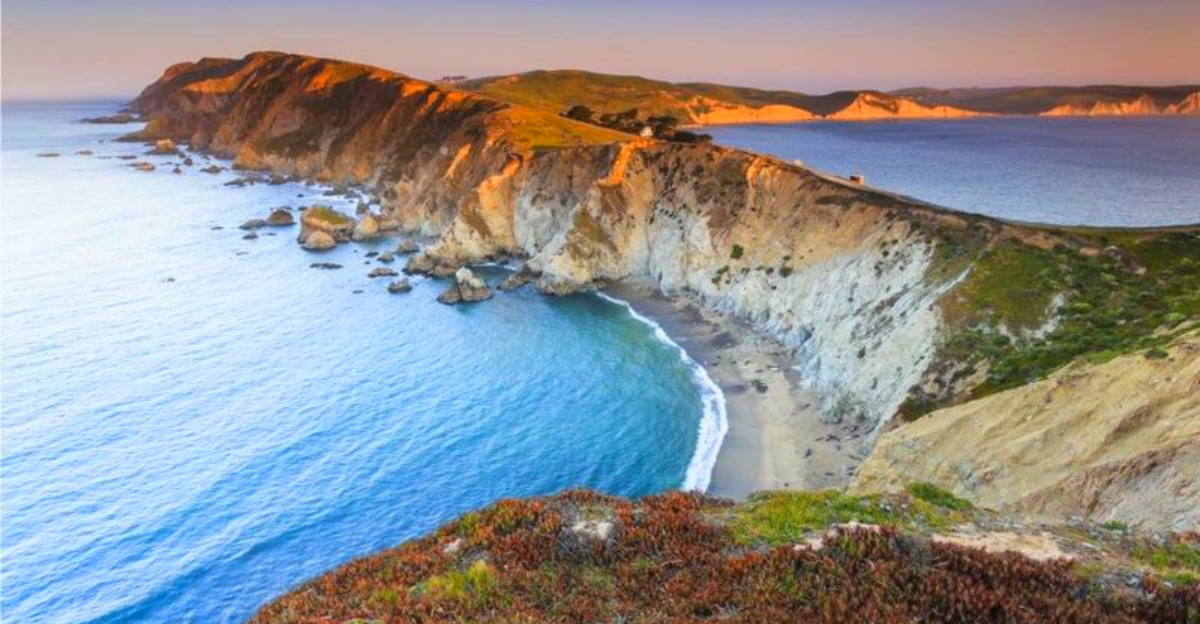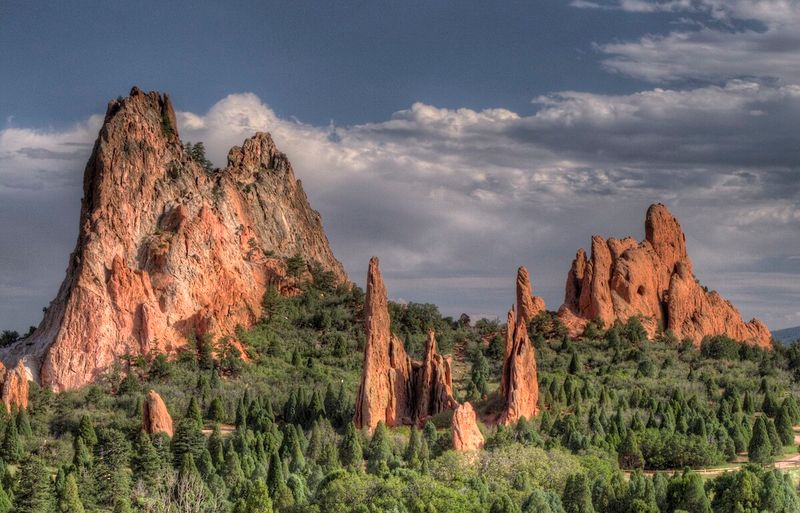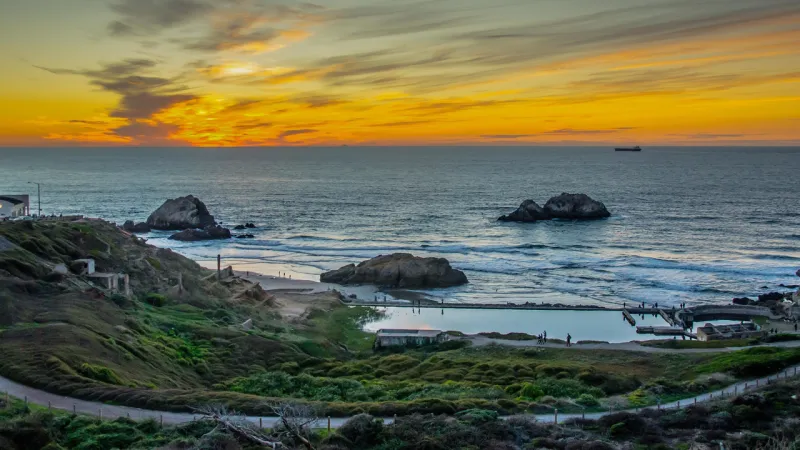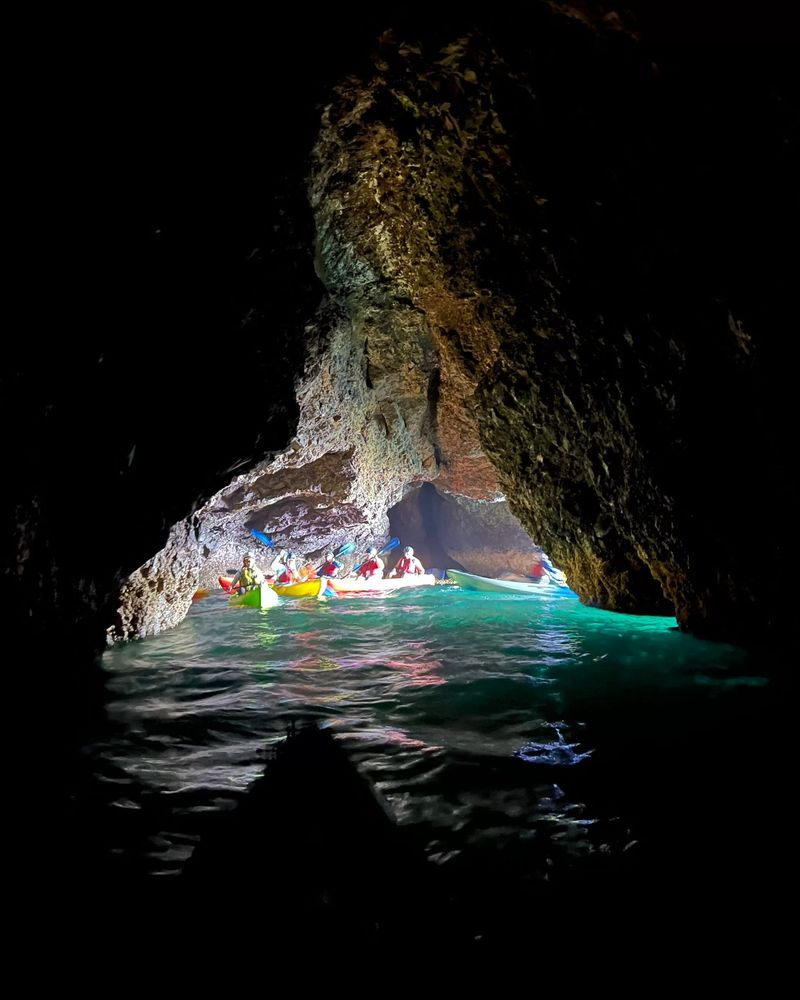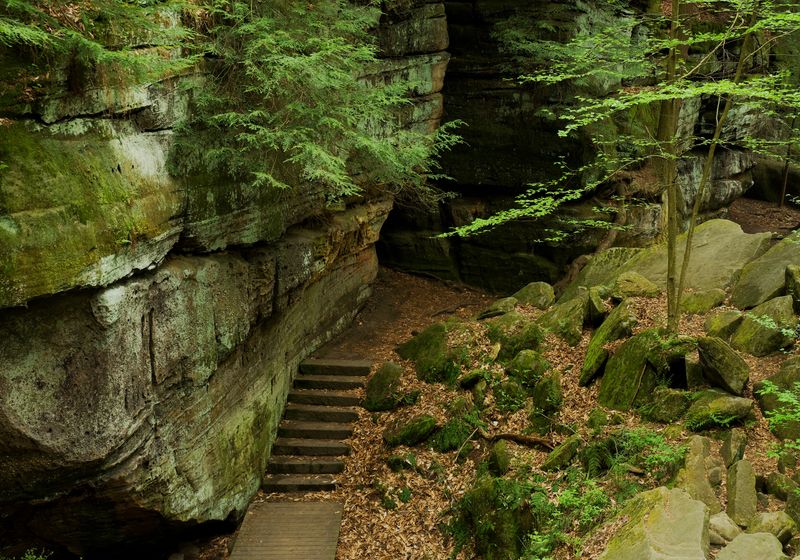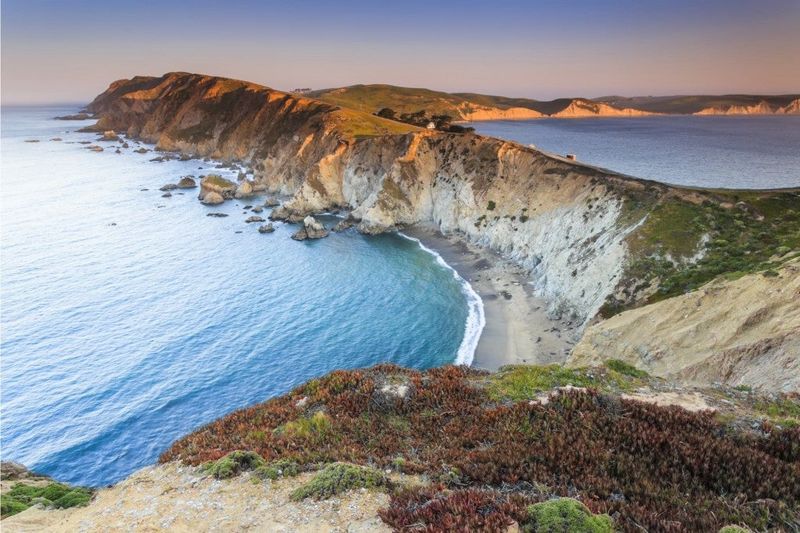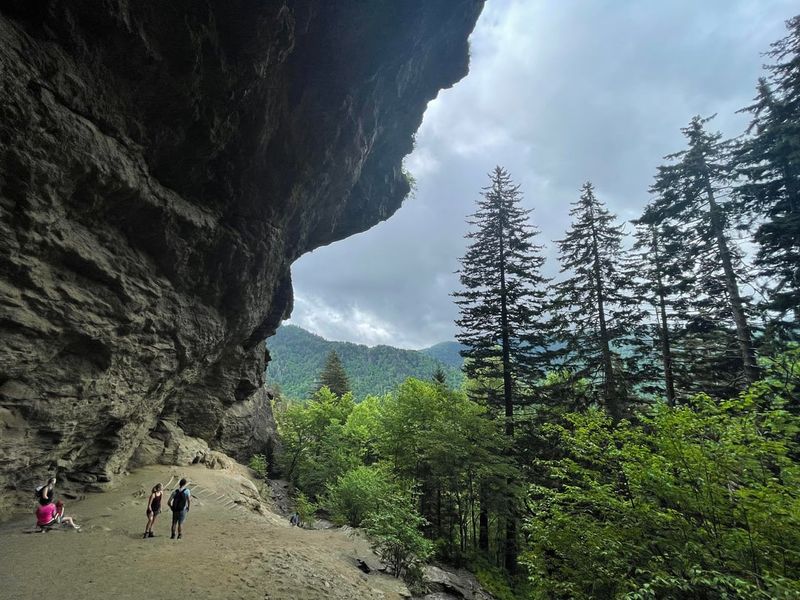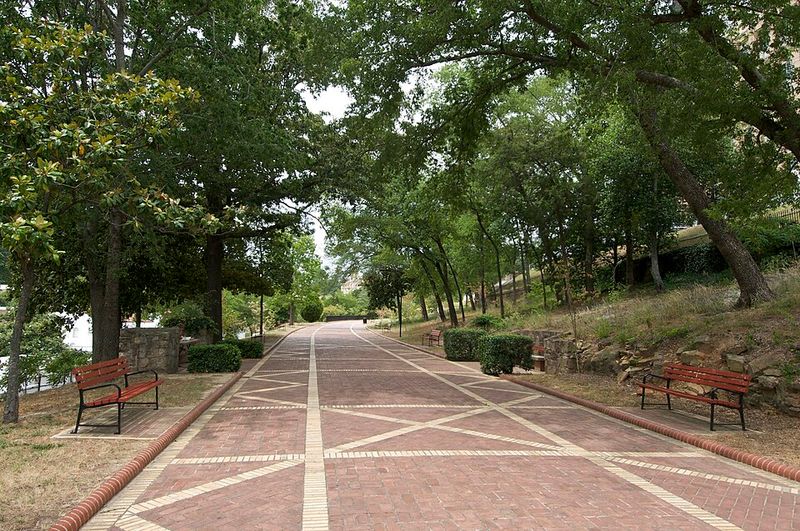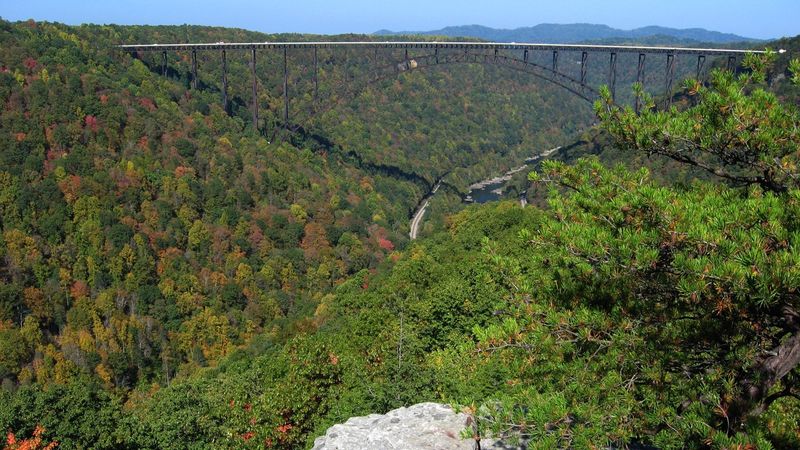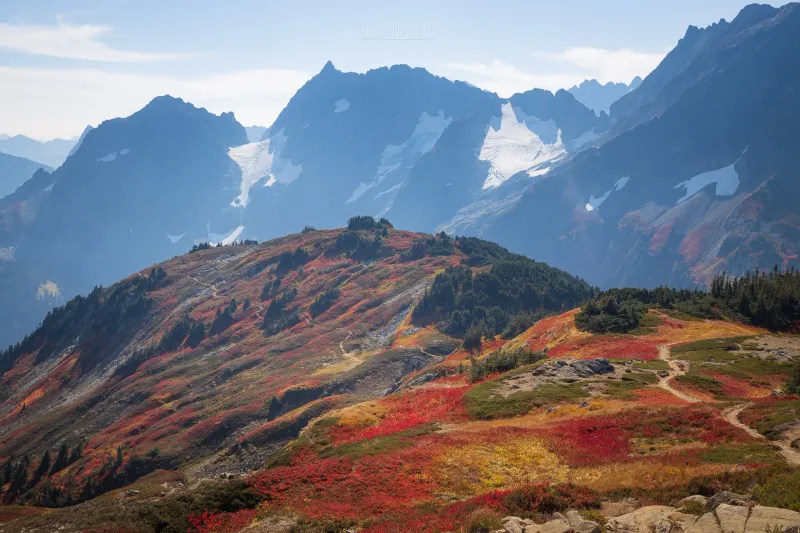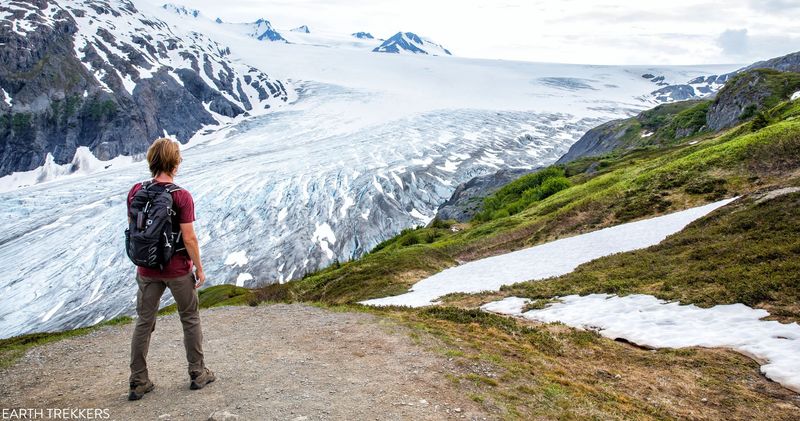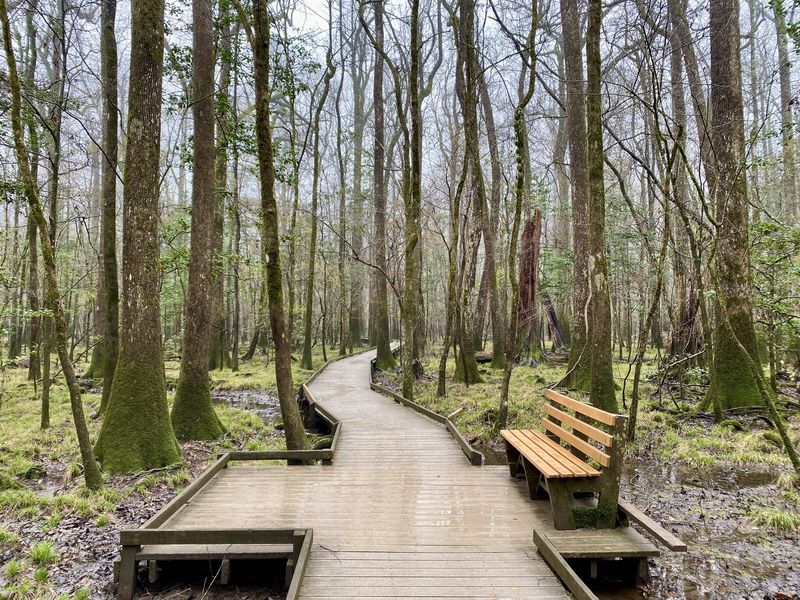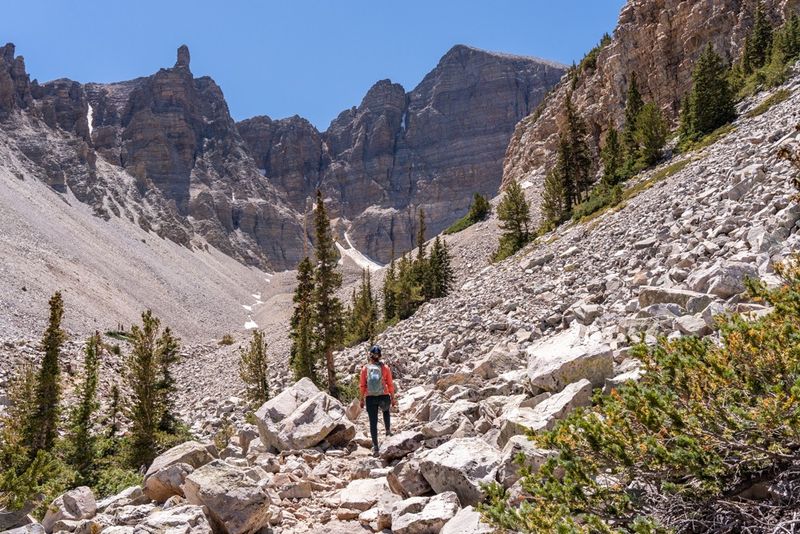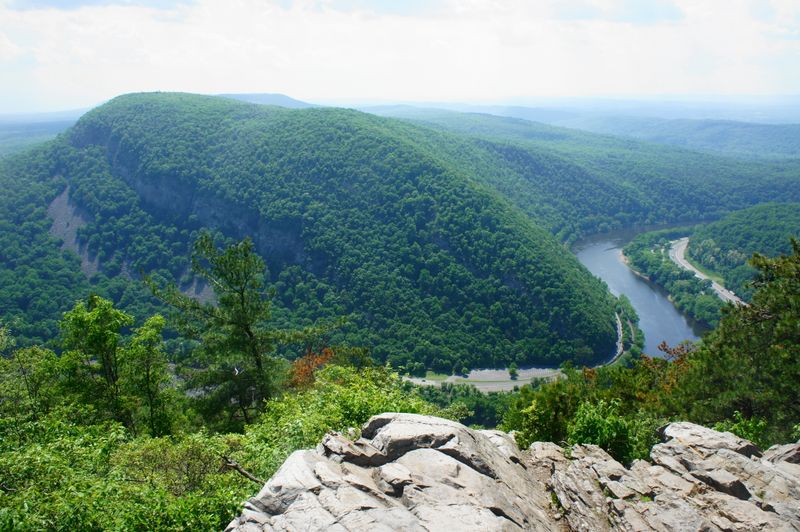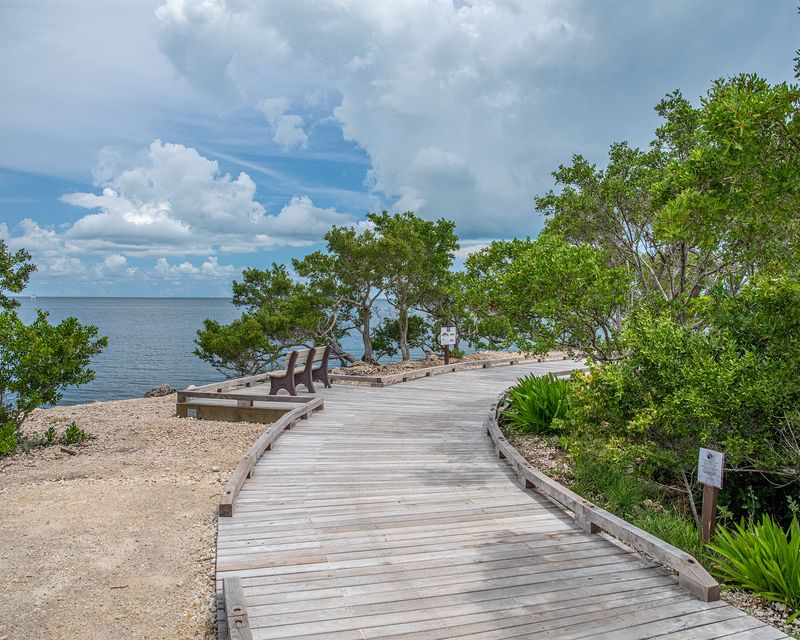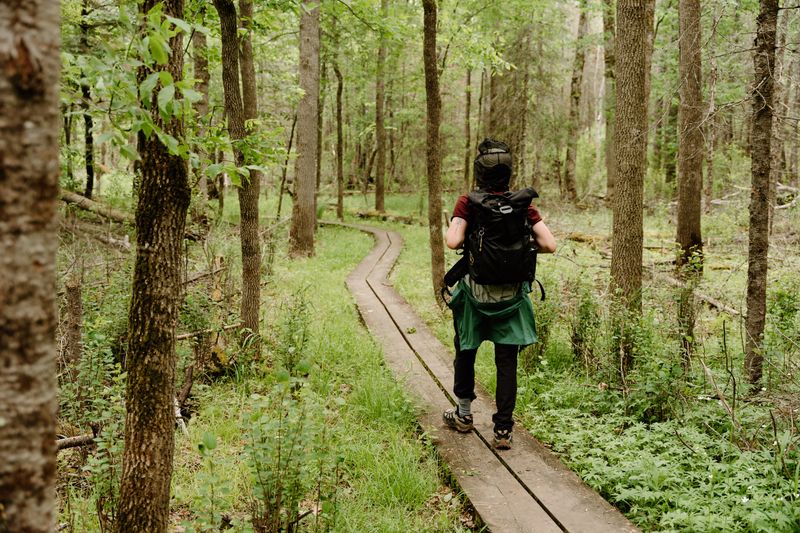Exploring America’s wild places doesn’t have to drain your wallet. Across the country, dozens of stunning trails welcome hikers without charging a single dollar at the gate. From red-rock wonderlands to glacier-carved peaks, these free hikes prove that the best adventures are often the most accessible.
1. Garden of the Gods – Perkins Central Garden Trail (Colorado Springs, CO)
Red rock towers soar overhead as you walk this paved 1.5-mile loop through one of Colorado’s most photographed landscapes. Pikes Peak looms in the distance, creating a dramatic backdrop for the rust-colored sandstone fins that give the park its name.
Families love this trail because strollers and wheelchairs handle it easily, yet the scenery rivals any rugged backcountry trek. The visitor center offers free maps and ranger programs year-round.
Arrive early on summer weekends to snag parking near the trailhead. The trail connects to longer routes if you want to explore deeper into the park’s 1,300 acres of geological wonders.
2. Lands End Trail – Golden Gate National Recreation Area (San Francisco, CA)
Wind-sculpted cypress trees lean over the cliff edge as waves crash far below on this 3.4-mile coastal ramble. The Golden Gate Bridge appears and disappears through the fog, creating that quintessential San Francisco hiking experience.
History buffs appreciate the ruins of Sutro Baths along the route, massive concrete foundations that once held elaborate Victorian-era swimming pools. Wildflowers blanket the headlands in spring, painting the trail margins with poppies and lupine.
Watch your footing on the narrow single-track sections, especially after rain when mud can make things slippery. Most of the Golden Gate National Recreation Area charges nothing, making this an urban escape that won’t cost you.
3. Cavern Point / Scorpion Canyon Loop – Channel Islands National Park (Santa Cruz Island, CA)
Island foxes—found nowhere else on Earth—dart across the trail as you climb toward Cavern Point’s stunning overlook. These cat-sized canines show little fear of humans, often pausing to study hikers with curious eyes.
The 2.5-mile loop combines ocean vistas with a peek into Scorpion Canyon’s sheltered valley. While the park itself charges no entrance fee, you’ll need to budget for the Island Packers boat ride from Ventura Harbor.
Spring brings incredible wildflower displays that carpet the island in yellows and purples. Pack all your water and snacks—the island has no services beyond basic restrooms at the landing.
4. Ledges Trail – Cuyahoga Valley National Park (Peninsula, OH)
Moss-draped sandstone walls tower overhead in this short 2.2-mile loop that feels like stepping into a fantasy novel. The trail squeezes between narrow rock corridors before opening onto an overlook of the Cuyahoga River valley below.
Photographers flock here in autumn when maples and oaks turn the surrounding forest into a riot of orange and gold. The cool, shaded passages offer welcome relief during Ohio’s humid summers.
Cuyahoga Valley is one of the few national parks that never charges an entrance fee, making it a budget-friendly option for Northeast Ohio families. Combine this hike with a visit to Brandywine Falls nearby for a full day outdoors.
5. Tomales Point (or Alamere Falls) – Point Reyes National Seashore (Marin County, CA)
Herds of tule elk graze the windswept peninsula as you climb toward the point where Tomales Bay meets the Pacific. This 9.4-mile out-and-back delivers sweeping ocean views and guaranteed wildlife encounters—the elk population here roams freely across the grasslands.
Alternatively, tackle the Alamere Falls trail for a rare sight: a waterfall that tumbles directly onto the beach. Both routes showcase Point Reyes’ dramatic coastal beauty without charging an entrance fee.
Trailhead parking fills by mid-morning on sunny weekends, so plan accordingly. Bring layers because coastal fog can roll in quickly, dropping temperatures even on summer days.
6. Alum Cave (or Laurel Falls) – Great Smoky Mountains National Park (TN/NC)
Ancient hemlocks shade the path as you climb 2.3 miles to Alum Cave Bluff, a massive rock overhang that sheltered Cherokee hunters centuries ago. The “cave” isn’t really a cave at all but rather a concave cliff face streaked with mineral deposits.
For an easier option, Laurel Falls offers a paved 2.6-mile round-trip to a picturesque cascade. Both trails showcase why the Smokies attract more visitors than any other national park—and remarkably, there’s no entrance fee.
Note the parking tag requirement if you’re staying longer than fifteen minutes. Summer crowds can be intense, so weekday mornings offer the best experience.
7. Grand Promenade – Hot Springs National Park (Hot Springs, AR)
Steam rises from thermal vents as you stroll this half-mile brick pathway behind the elegant Bathhouse Row buildings. Built in the 1930s, the promenade connects eight historic bathhouses that once attracted wealthy visitors seeking the healing powers of the 143-degree spring water.
Benches along the way invite you to pause and watch the town below while hot water trickles through ornamental fountains. The national park designation protects the springs and surrounding mountains, all accessible without paying an entrance fee.
Combine your walk with a tour of Fordyce Bathhouse, now a museum that recreates the gilded-age spa experience. The entire downtown area is walkable and full of history.
8. Long Point Trail – New River Gorge National Park & Preserve (Fayetteville, WV)
Through rhododendron tunnels and oak forest, this 1.6-mile trail winds to the most iconic view in West Virginia: the New River Gorge Bridge from directly below. The steel arch spans 3,030 feet across the canyon, and from Long Point, you truly grasp its engineering marvel.
Rock climbers dot the canyon walls below, their colorful gear visible against the sandstone cliffs. White-water rafters float the river far beneath, their shouts echoing up through the gorge.
America’s newest national park charges no entrance fee, making it an affordable weekend destination. October brings Bridge Day, when the span closes to traffic and BASE jumpers leap into the void.
9. Cascade Pass (and Sahale Arm option) – North Cascades National Park (WA)
Switchbacks climb through old-growth forest before bursting into alpine meadows where glaciers dominate the skyline. The 7.4-mile round-trip to Cascade Pass rewards hikers with 360-degree mountain views that rival anything in the Lower 48.
Ambitious trekkers can continue up Sahale Arm, gaining another 2,000 feet to reach even more spectacular glacier vistas. Marmots whistle from boulder fields, and mountain goats pick their way across impossibly steep slopes.
The road to the trailhead typically opens in July and closes with the first heavy snows in October. Despite its jaw-dropping scenery, North Cascades charges no entrance fee—perhaps because it’s one of America’s least-visited national parks.
10. Harding Icefield Trail – Kenai Fjords National Park (Seward, AK)
Prepare for 8.2 miles of relentless climbing that gains 3,000 feet—but the payoff is unforgettable. The trail ascends from rainforest through shrubby tundra before reaching a moonscape where the Harding Icefield stretches to the horizon, a 700-square-mile expanse of ancient ice.
Exit Glacier tumbles down the mountainside below, calving chunks of blue ice into the valley. Black bears sometimes forage on the lower trail, so make noise and carry bear spray.
Despite Kenai Fjords’ remote location, the park charges no entrance fee. Summer daylight lasts nearly twenty hours, giving you plenty of time to complete this bucket-list hike.
11. Boardwalk Loop – Congaree National Park (Hopkins, SC)
Bald cypress trees soar overhead, their knobby knees poking through the blackwater swamp as you follow the elevated 2.4-mile boardwalk. This is old-growth bottomland hardwood forest—one of the tallest temperate deciduous forests remaining in the world.
Barred owls call during the day, and if you’re lucky, you might spot a yellow-bellied slider turtle sunning on a log. The boardwalk keeps your feet dry even when the forest floods, which happens regularly.
Summer brings oppressive heat and mosquitoes, so spring and fall offer the best hiking conditions. Congaree charges no entrance fee, making it an accessible stop between Charleston and Columbia.
12. Bristlecone & Glacier Trail – Great Basin National Park (near Baker, NV)
Twisted bristlecone pines—some over 3,000 years old—cling to the rocky slopes at 10,000 feet elevation. These ancient survivors were already mature when Rome was founded, their gnarled trunks sculpted by centuries of wind and snow.
The 4.6-mile loop continues to Nevada’s only glacier, a small ice field tucked into a north-facing cirque. In late summer, the glacier shrinks to a fraction of its winter size, but its presence this far south surprises most visitors.
Great Basin National Park sees fewer than 150,000 annual visitors and charges no entrance fee. The high elevation means snow lingers into July, so check conditions before making the drive.
13. Mount Tammany (Red Dot/Blue Dot Loop) – Delaware Water Gap NRA (NJ/PA)
Your quads will burn on the 1.3-mile climb up the Red Dot Trail, but the summit view stops you in your tracks. The Delaware River cuts through the Appalachian ridge below, creating the distinctive “gap” that gives this area its name.
Loop back down via the slightly gentler Blue Dot Trail for a 3.5-mile circuit. Autumn weekends draw crowds of leaf-peepers, so arrive early or visit on a weekday for a quieter experience.
The Delaware Water Gap National Recreation Area charges no entrance fee for trail access, though some swimming and picnic areas have seasonal amenity fees. This is one of the best workout hikes within two hours of New York City.
14. Jetty (Convoy Point) Trail – Biscayne National Park (Homestead, FL)
Mangrove roots twist into the turquoise shallows as you walk this easy half-mile trail along Biscayne Bay. Herons stalk the flats at low tide, and you might spot a manatee surfacing in the warm water.
Biscayne is 95 percent underwater, making it unique among national parks—most visitors explore by boat or snorkel. But this shoreline trail offers a taste of the park’s tropical beauty without getting wet.
The park charges no entrance fee, though boat tours and rentals cost extra. Sunrise here is magical, with the sun rising over the bay and painting the mangroves golden. Bring bug spray year-round because mosquitoes thrive in the humid subtropical climate.
15. Oberholtzer & Bike Trail – Voyageurs National Park (International Falls, MN)
Birch trees shimmer in the breeze as you follow this gentle 2-mile path from the Rainy Lake Visitor Center through boreal forest. Loons call from the lake, and if you’re quiet, you might spot a beaver swimming near shore.
Voyageurs is a water-based park where most visitors arrive by boat, canoe, or kayak. But this accessible trail gives landlubbers a chance to experience the North Woods beauty without launching a watercraft.
The park charges no entrance fee, making it an affordable base for exploring Minnesota’s lake country. Summer brings mosquitoes and blackflies, so don’t forget insect repellent. Winter transforms the trail into a cross-country ski route through silent, snowy forest.
